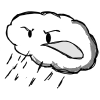Firstly, the issue Creativemind was up against.
There's currently a function called "Extract Notes to Lane" in the F8 Tools menu, it's a useful, if rarely-used item, which in one easy step cuts a range of notes and pastes them to a new Lane in the current Sequencer track, where you can can mute/solo either range, or move one of the ranges to another device track entirely. This is very useful, but it forces a user to split up the notes, when that isn't always wanted, especially since there is no ability to subsequently remerge multiple Lanes back to one (or indeed, merge clips on the same Lane (no, Join Clips is a different result
So, underneath "Extract Notes to Lane", a new, similar option: "Mute/Solo Notes In Range". This would mute or solo Notes above, below, or within a specificied range. Velocities do not change, notes are simply output or not output based on the set range.
Two.
Ghost Notes. The long-desired ability to view another Track's clip, at the same timeline position, in the current open clip. It would look a little like how non-active notes from a previous/subsequent clip in the same track currently do when they overlap that track's active clip. Ghost Notes would need a way to distinguish from overlapped clip's note on the same track, e.g., greyed out and locked from user interaction.
The draw order is crucial here. "send to back" is the obvious one, but then a current longer note will hide the timing of shorter ghost notes. The inverse would be true of a "bring to front" ghost note draw order. So such a function would likely be best "to front", i.e., above the active clip's notes, but with a transparency. Thus it's always visible, but doesn't hinder edit. Transparency level and colour must therefore be adjustable to account for user's individual visibility requirements.
Three.
The ability to right-click any Track or Clip (at least MIDI, but audio would be useful too) and select "Open Track in New Window". That would open a new window per track with its own mini-sequencer that could be resized, and include all the use tools. It would remember the last Track Window position. It would track the main sequencer clip/playhead. Potentially you would be able to open as many track windows as you like, but I'd guess that mostly even just one window, as a compositional reference for things like bass line or current chord. It also includes "Pin to Top" icon and a drop shadow to maintain separation if placed over the Rack (which as a window it obviously need not be, but this example is set up specifically so that it is).
So, Clip and/or Track name adds the following option:
The entire Track is cloned to a new window, which behaves exactly as that in the main Sequencer. You can open a clip within it.
And then you can open a clip on another track and compare/refer between them. Not sure if the current selected tool is reflected in both windows. It probably is.
Together, these would save a lot of users a hell of a lot of hassle switching between clips to recall the current chord to harmonise with it, instead of the current copying-chords-and-setting-them-to-zero-velocity-and-transposing-down-an-octave-type-workarounds we've endured for decades.

